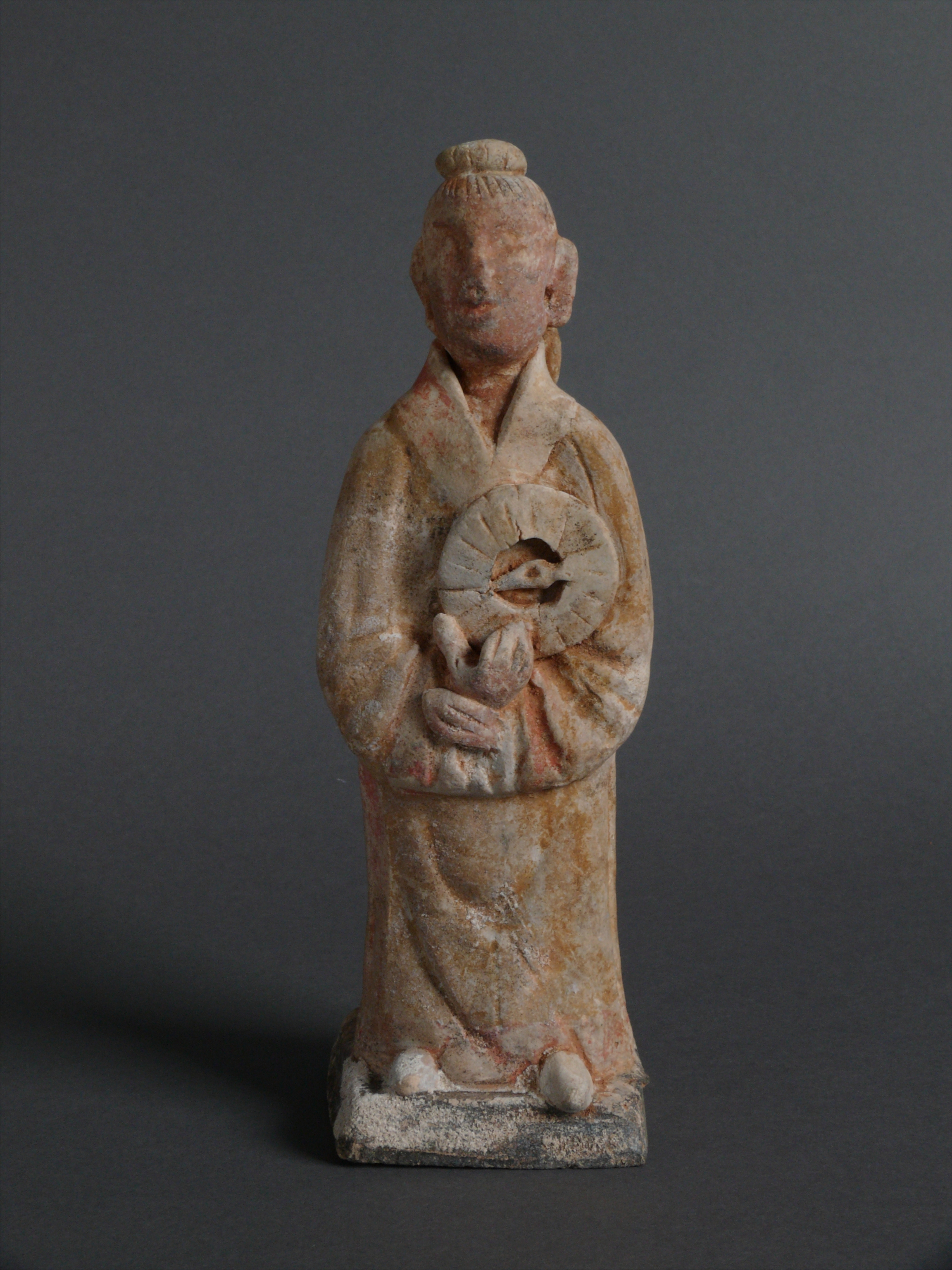Pottery figurine of a standing man holding a compass of Song Dynasty
 It was unearthed in the tomb of a geomancer in Fubei town, Fuzhou City in May 1996. The pottery figurine is 23.2 cm in height, 7.6 cm in diameter, and 0.42 kg in weight. The pottery figurine wears a tawny long gown with right lapel. It has a square base, with the three words “Zhang Jian Gu” written under it. The pottery figurine holds a circular compass with 16 distinct scale lines against its chest. In the middle of the compass, there is a long diamond-shaped needle to point the direction. For many years, due to the lack of evidence, compass was always believed to have been invented in Europe, and was only introduced into China from Japan until the 16th century. However, this pottery figurine shows the world's earliest compass shaped object, which proves that China has already invented the compass in the 12th century. This discovery has overturned the previous sayings and pushed back the era when compass was invented by 300 to 400 years. This pottery figurine provides valuable material for studying the time of invention, shape and function of the compass, and becomes the only cultural relic in Jiangxi Province selected for exhibition in 2010 Shanghai World Expo.
It was unearthed in the tomb of a geomancer in Fubei town, Fuzhou City in May 1996. The pottery figurine is 23.2 cm in height, 7.6 cm in diameter, and 0.42 kg in weight. The pottery figurine wears a tawny long gown with right lapel. It has a square base, with the three words “Zhang Jian Gu” written under it. The pottery figurine holds a circular compass with 16 distinct scale lines against its chest. In the middle of the compass, there is a long diamond-shaped needle to point the direction. For many years, due to the lack of evidence, compass was always believed to have been invented in Europe, and was only introduced into China from Japan until the 16th century. However, this pottery figurine shows the world's earliest compass shaped object, which proves that China has already invented the compass in the 12th century. This discovery has overturned the previous sayings and pushed back the era when compass was invented by 300 to 400 years. This pottery figurine provides valuable material for studying the time of invention, shape and function of the compass, and becomes the only cultural relic in Jiangxi Province selected for exhibition in 2010 Shanghai World Expo.


